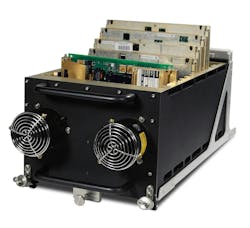Navy taps Lockheed Martin, L3Harris, to redesign F-35 core processor SDRAM memory and panoramic display
PATUXENT RIVER NAS, Md. – U.S. Navy combat avionics experts needed to redesign the synchronous dynamic random-access memory (SDRAM) for the integrated core processor and panoramic cockpit display aboard the F-35 jet strike fighter. They found their solution from Lockheed Martin Corp.
Officials of the Naval Air Systems Command at Patuxent River Naval Air Station, Md., announced a $760.1 million order last month to the Lockheed Martin Aeronautics segment in Fort Worth, Texas, to redesign the SDRAM for the Technical Refresh Three integrated core processor and panoramic cockpit display of the F-35 aircraft for the Navy, Air Force, Marine Corps, and non-U.S. Department of Defense (DOD) participants.
This contract is to help alleviate design and long-term maintenance issues related to the F-35's diminishing manufacturing sources and material shortages, and to mitigate the effects of obsolescent electronic parts. Lockheed Martin is the original designer of the F-35.
The F-35's integrated core processor and panoramic cockpit display are from L3Harris Technologies Inc. in Alpharetta, Ga. The F-35 Integrated Core Processor (ICP) is an open-systems architecture that runs complex information flow in military missions. The L3Harris ICP operates not only on the F-35 combat jet, but also on the Lockheed Martin C-130J utility turboprop.
Related: F-35 jet fighters to take integrated avionics to a whole new level
The primary core processor in the F-35 is the Distributed Aperture System (DAS) processor, which integrates data from several sensors and provides the pilot with situational awareness.
The F-35 also has a Mission System Processor (MSP) for sensor fusion, threat detection, and electronic warfare (EW); Avionics System Processor (ASP) to manage communication, navigation, and control; and the Central Computer (CC) to manage data flow, perform calculations, and ensure that all systems are operating together.
The F-35's panoramic display also is from L3Harris Technologies in Alpharetta, Ga., and from Elbit Systems of America LLC in Fort Worth, Texas. L3Harris won a $43.6 million order two years ago to help redesign the F-35 panoramic cockpit.
This large active-matrix liquid crystal display (AMLCD) is an intuitive touch-screen, and can present the F-35 Lightning II pilot with the information he needs, quickly, and without overwhelming him with too much information.
The panoramic display for the F-35 is divided in two electronically. This design offers full redundancy and enables the display to continue functioning in case of component failure or battle damage.
The panoramic display smart-stitches separate images into one continuous image. It shows a variety of sensor information, attack information, and aircraft status data.
The display reportedly can withstand a puncture or a crack, and still offer all its features on only one side. In a pinch, the F-35 pilot still can rely on his helmet-mounted display in case of catastrophic avionics failure.
On this order Lockheed Martin will do the work in Fort Worth, Texas, and should be finished by January 2029. For more information contact Lockheed Martin Aeronautics online at https://www.lockheedmartin.com/en-us/who-we-are/business-areas/aeronautics.html, or L3Harris at www.l3harris.com.
About the Author
John Keller
Editor-in-Chief
John Keller is the Editor-in-Chief, Military & Aerospace Electronics Magazine--provides extensive coverage and analysis of enabling electronics and optoelectronic technologies in military, space and commercial aviation applications. John has been a member of the Military & Aerospace Electronics staff since 1989 and chief editor since 1995.

